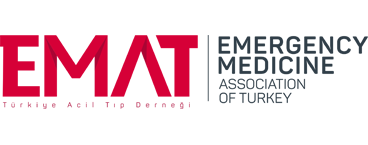Incidence and predisposing factors associated with peri‑intubation cardiac arrest: A systematic review and meta‑analysis
Nattikarn Meelarp1 , Wachira Wongtanasarasin1,2
, Wachira Wongtanasarasin1,2
1Department of Emergency Medicine, Faculty of Medicine, Chiang Mai University, Chiang Mai, Thailand
2Department of Emergency Medicine, UC Davis School of Medicine, Sacramento, CA, USA
Keywords: Cardiac arrest, emergent intubation, incidence, peri‑intubation cardiac arrest
Abstract
OBJECTIVES: Various studies have delved into its incidence and risk factors, but a comprehensive meta analysis exploring this life threatening complication during emergent endotracheal intubation has been lacking. This study quantitatively assesses the global incidence and associated risk factors of peri intubation cardiac arrest (PICA).
METHODS: We conducted a systematic literature search on PubMed, Embase, Web of Science, and Cochrane Library from inception to October 28, 2024. Two independent authors searched, reviewed, and evaluated selected studies. Any peer reviewed published studies reporting the incidence of PICA among adults (≥18 years) outside of the operating theater were included. Studies reporting incidence within heterogeneous populations or from overlapping groups were excluded. The primary outcome focused on determining the global incidence of PICA, while the secondary outcome addressed associated risk factors. A random effects model was used to aggregate overall incidence rates. Subgroup analysis and meta regression were conducted to examine PICA incidence in different locations and with the study’s sample size. The publication bias was assessed via Egger’s test and visualization of the funnel plot. The risk of bias was evaluated using the Joanna Briggs Institute Critical Appraisal Checklist.
RESULTS: Fifteen articles met the inclusion criteria for the meta analysis. PICA incidence varied from 0.5% to 23.3%. The estimated pooled incidence was 2.7% (95% confidence interval [CI]: 1.9–3.6) across PICA in the emergency department (ED) (2.5%, 95% CI: 1.4–3.7) and outside of the ED (2.9%, 95% CI: 2.2–3.6). Egger’s test yielded P = 0.009, indicating potential publication bias due to small study effects, as suggested by the funnel plot. Meta regression analysis revealed higher incidence in studies with smaller populations. Notably, preintubation hypotension, hypoxemia, and body mass index were found to be the most associated risk factors for PICA. Additionally, there was significant variability in PICA definitions, ranging from immediate to occurrences within 60 min after intubation.
CONCLUSION: PICA occurrences during emergent endotracheal intubation reached up to 3%, showing a similar rate both within and outside the ED. While limitations such as heterogeneity and potential bias exist, these findings underscore the imperative for prospective research. Prospective studies are warranted to further delineate this critical aspect of emergent intubation.
How to cite this article: Meelarp N , Wongtanasarasin W. Incidence and predisposing factors associated with peri-intubation cardiac arrest: Asystematic review and meta-analysis. Turk J Emerg Med 2025;25:130-8.
Not applicable.
NM and WW developed the concept and drafted the manuscript. NM and WW performed data acquisition and wrote the manuscript. WW performed data and statistical analyses and revised the manuscript. All authors reviewed and approved the final version of the manuscript.
None Declared.
This study was partly supported by the Faculty of Medicine, Chiang Mai University, and the project described was supported by the National Center for Advancing Translational Sciences, National Institutes of Health, through grant number UL1 TR001860. The content is solely the responsibility of the authors and does not necessarily represent the official views of the NIH.

